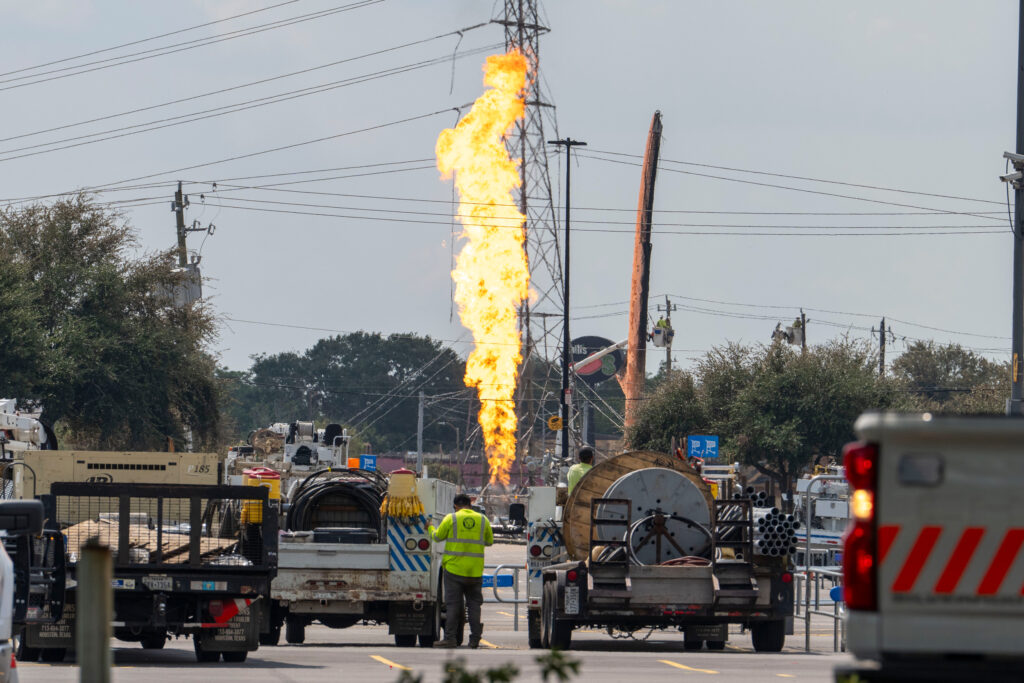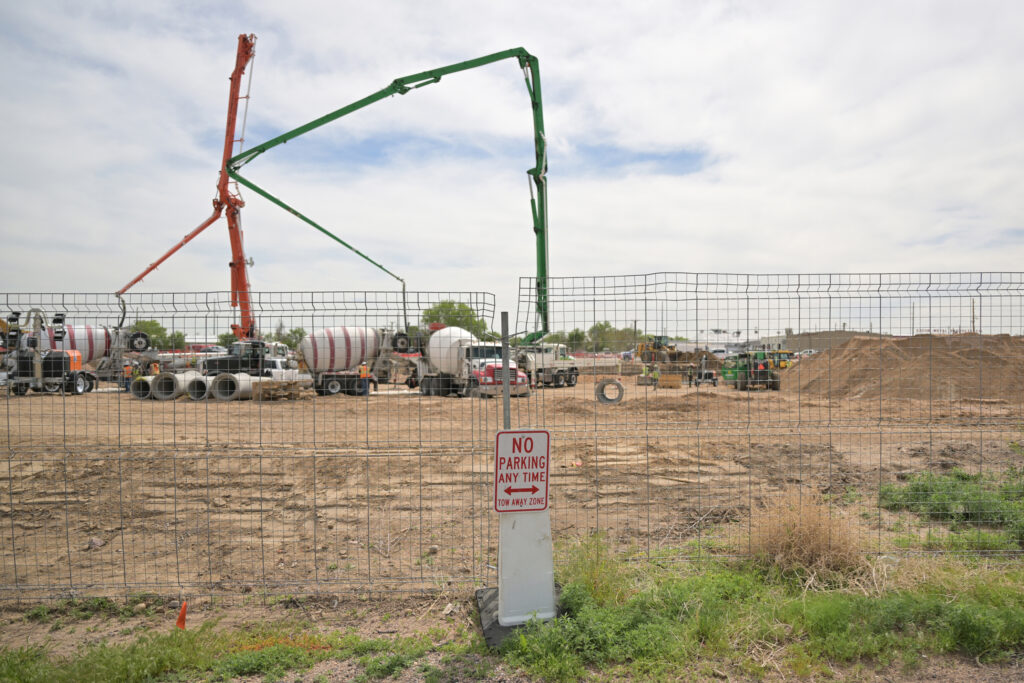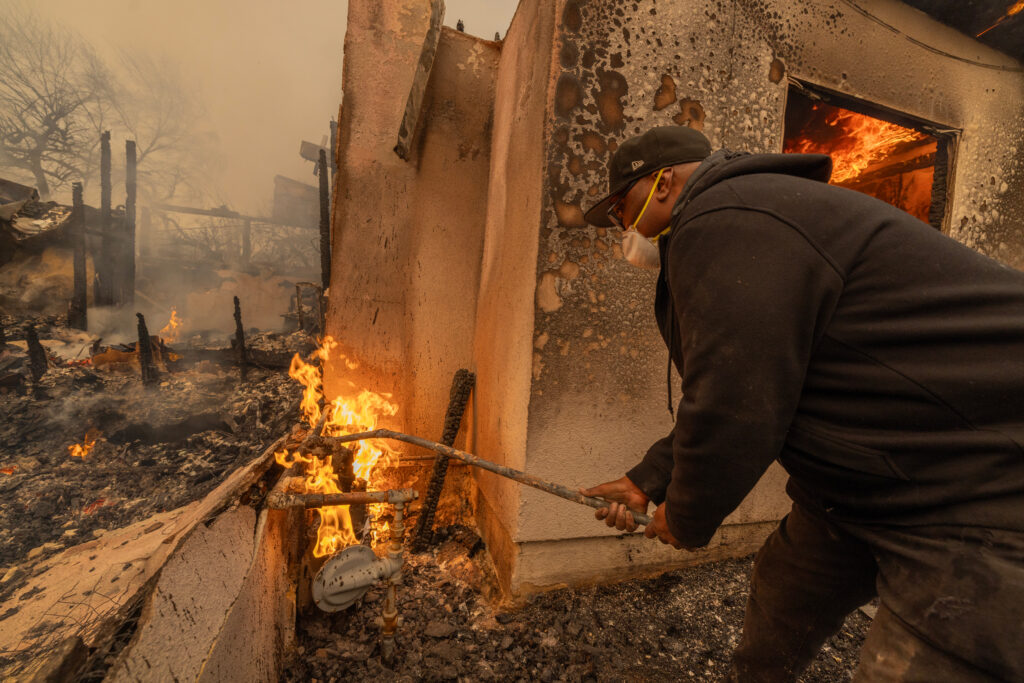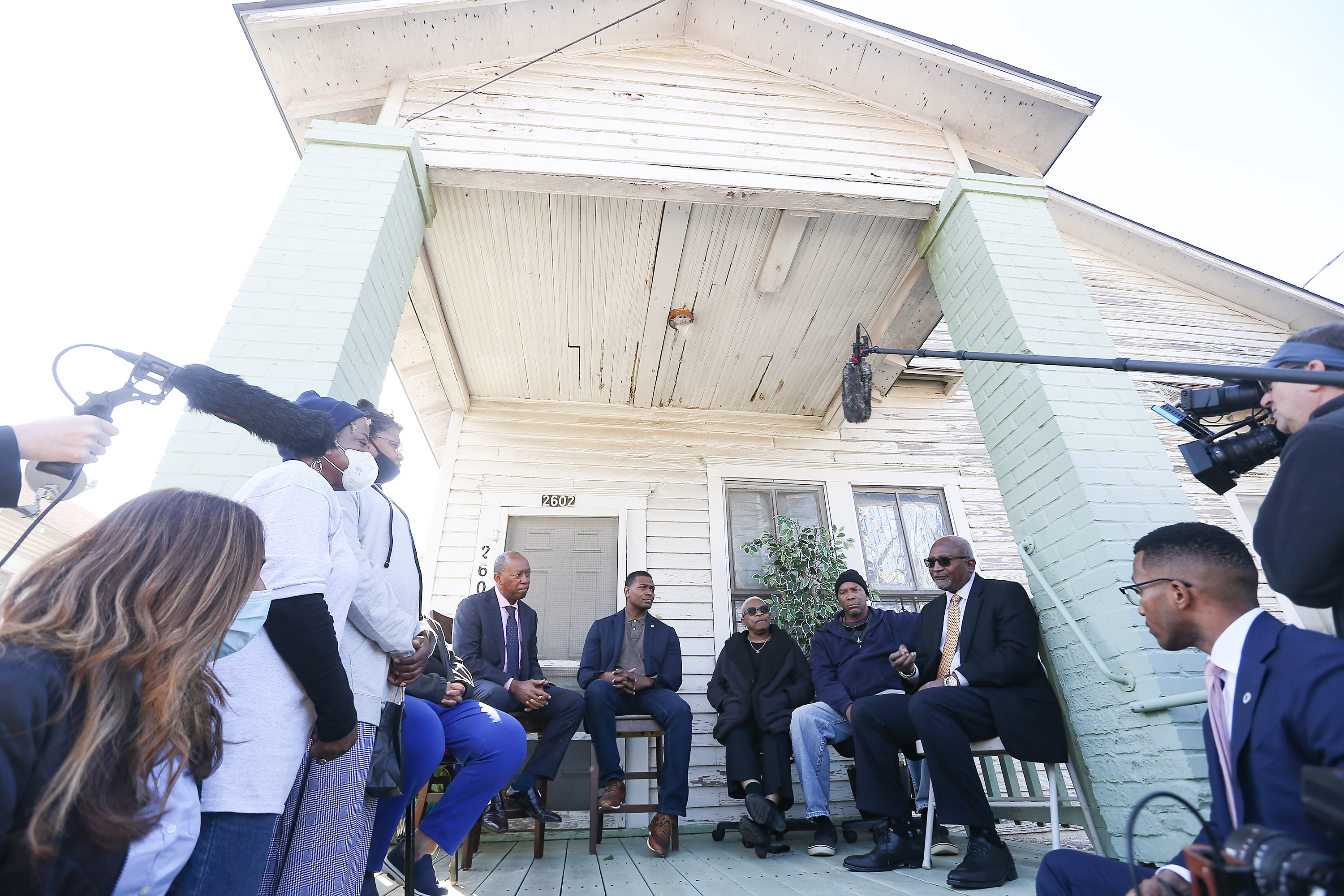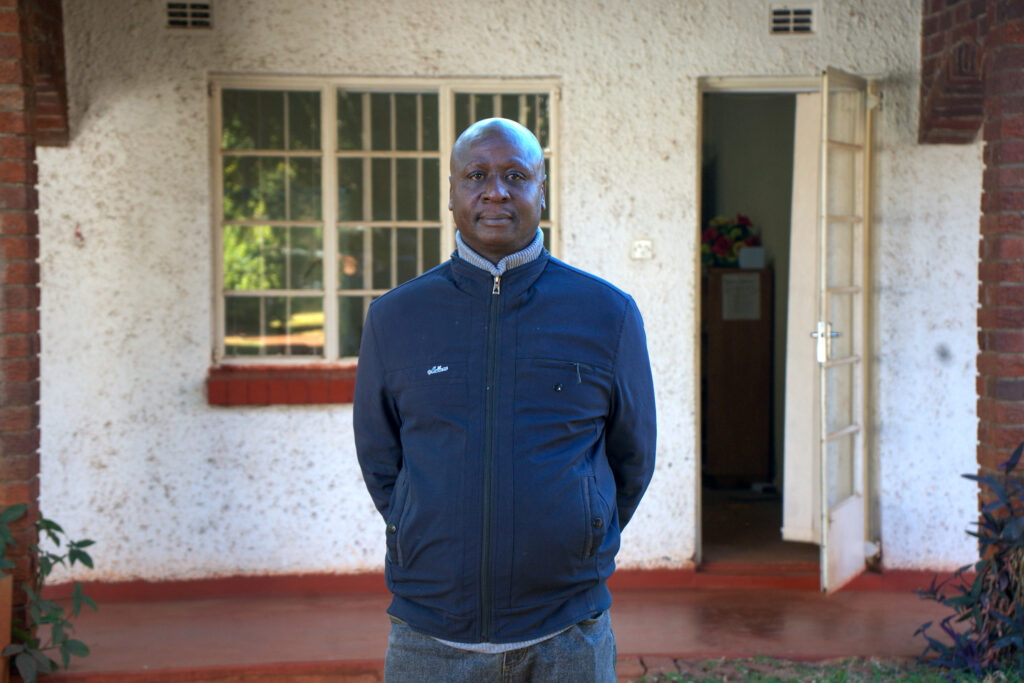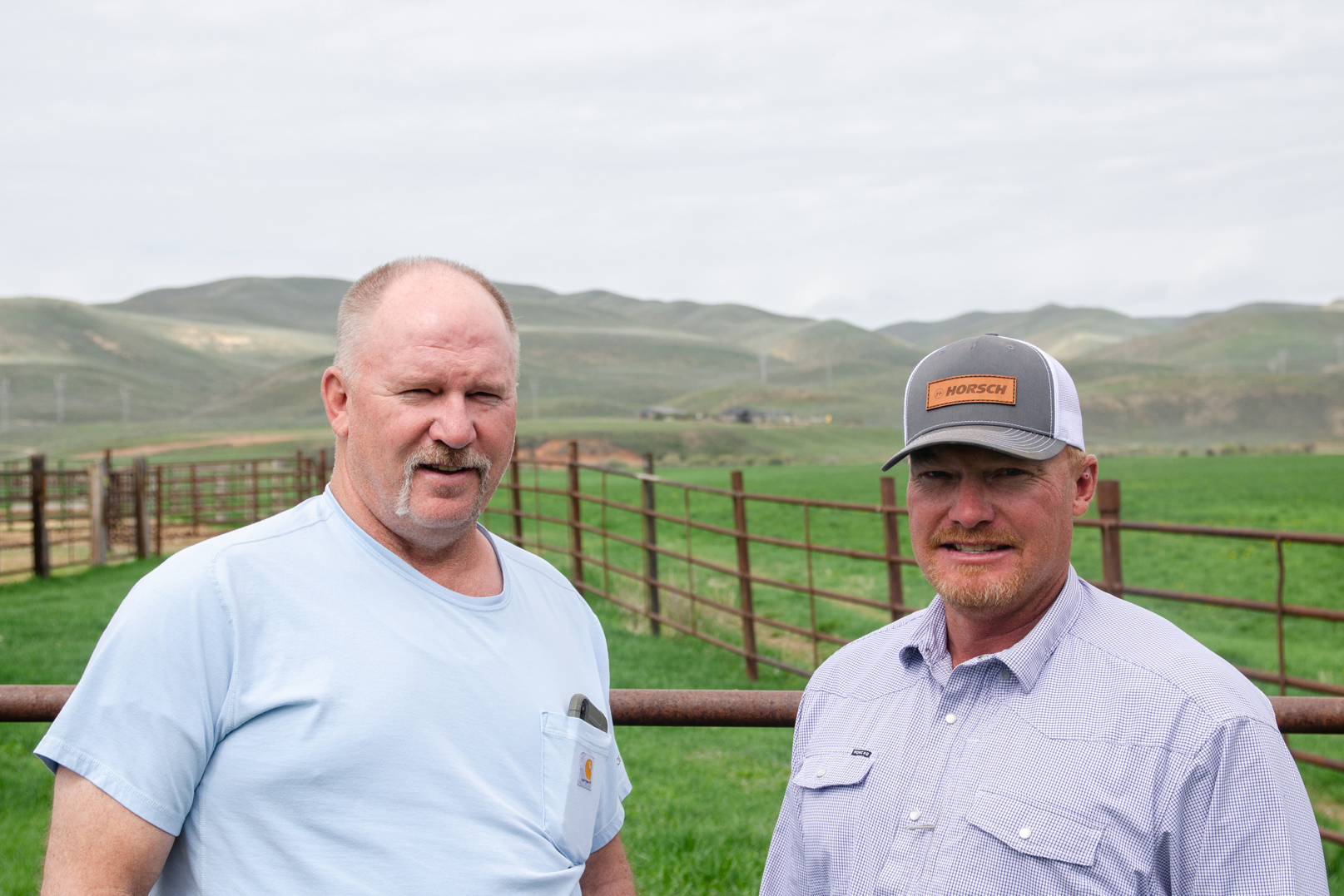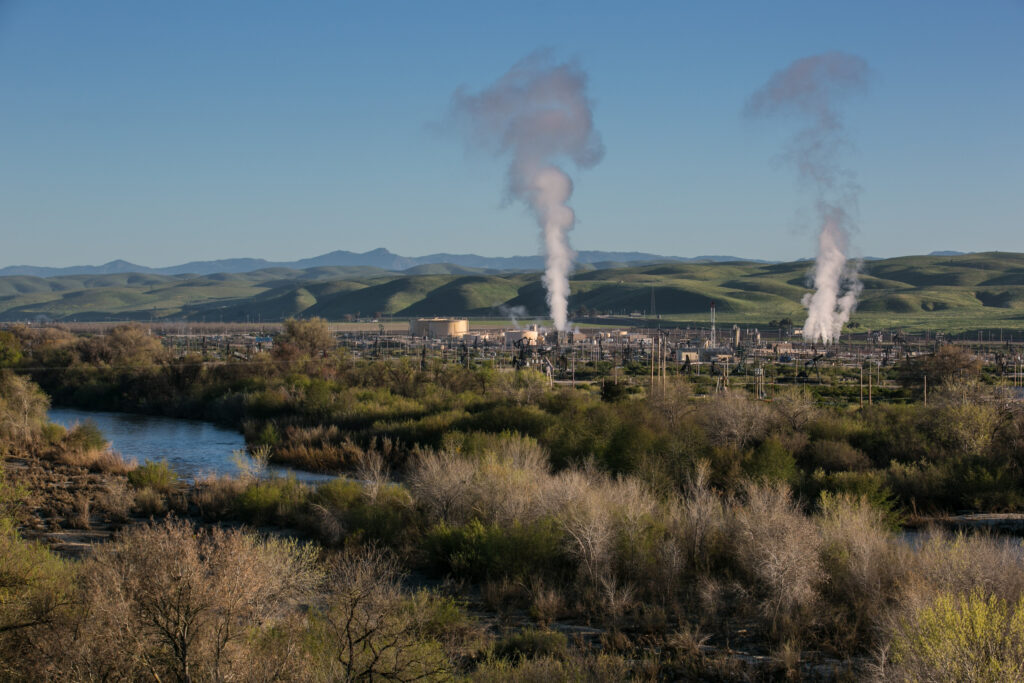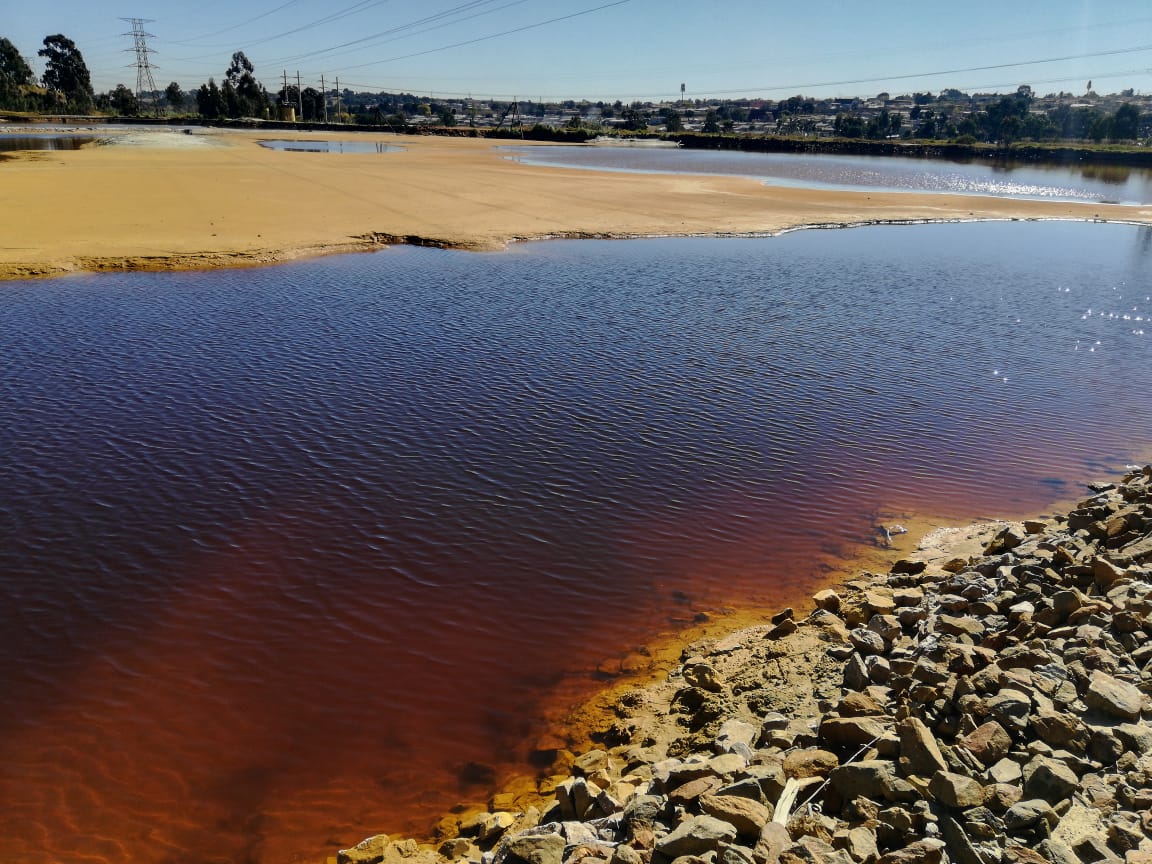This story was published in partnership by Inside Climate News and the Texas Observer.
Juan Benito Mancias draws his identity from the landscape at the Rio Grande’s end not because he owns it, but because it owns his people, literally. His ancestors lie buried in it, going back millennia.
Sadly for Mancias, U.S. law provides him no rights to protect his forebearers’ graves, even as they’re ripped from the ground by machines. The official story says the flourishing cultures of this once-mighty river delta died out, leaving no one to speak for their prime Gulf Coast real estate on the southern tip of Texas.
It’s a convenient myth for the developers who see cheap land and labor near the Mexican border as their chance to build Texas’ next great industrial complex, here at the state’s last available deepwater port.
But it’s not true.
We’re hiring!
Please take a look at the new openings in our newsroom.
See jobs
Mancias, now a 70-year-old long-haired great-grandfather, knows secret stories that could never be written, about the last free villages on the Rio Grande’s banks, about the massacres, about his people’s disguises and about their flight, at last, in the 1940s to the Panhandle of Texas, where he grew up picking cotton.
He knows about the old river with ancient forests and enormous, teeming marshlands of which only glimpses remain. He knows how much was lost and how quickly it happened.
He also knows that people don’t believe him. He heard the same lines all his life: that the original inhabitants of Texas are gone, that his grandparents made up their stories, that he was just a Mexican from Lubbock.
This society has been trying to get rid of Mancias’ people for 500 years. It couldn’t kill them all, so it’s destroying the evidence that they ever existed. That’s what Mancias sees as 100-ton bulldozers flatten the hills his ancestors camped on, churn up their bones, and casually crush them into rubble, removing these last traces of their world.
“They almost annihilated us and that genocide continues,” Mancias said. “To destroy the environment you have to destroy the people who protect it.”
He faces a formidable foe here at the last frontier for oil and gas on the Gulf Coast of Texas. Every other major inlet from the Mississippi River east through Port Arthur, Houston, Freeport, Lavaca Bay and Corpus Christi is already ringed with refineries, chemical plants, and terminals.
But at the farthest tip of Texas, the Rio Grande meets the Gulf between wildlife refuges, a state park, and a majestic wilderness that still shelters endangered and little-known wildlife.

Scenes from the Boca Chica tract of the Lower Rio Grande National Wildlife Refuge, near State Highway 4 in Cameron County.
This is where Houston-based developer NextDecade has begun constructing an $18 billion mega-project, which it called the “largest greenfield energy project [financed] in U.S. history” when it announced in 2023 that it had secured investors to proceed.
Named Rio Grande LNG, the 750-acre facility will eventually pipe in up to 27 million tons per year of gas from fracked wells in the Permian Basin, supercool it to -260 degrees fahrenheit, and load it onto tanker ships for sale overseas as liquified natural gas (LNG). It’s part of an explosion of lookalike projects that quickly made the United States the world’s top exporter of liquified gas and drove soaring gas production at home.
On an adjacent tract, another project called Texas LNG intends to build atop a site called Garcia Pasture—an ancient village ground where people lived seasonally for almost 800 years. The World Monument Fund calls it “one of America’s premier archaeological sites.” That project has its permits and awaits investor commitments before breaking ground.
And about 5 miles away, SpaceX continues to expand its Starbase complex, where it manufactures and launches the most powerful rockets in the world (which occasionally explode and fall to earth).
Mancias fears this is just the beginning.
“All of this will be gone,” he said, driving his pickup truck down a highway through the marshes. “They’re going to destroy all of this.”


The Carrizo/Comecrudo Tribe of Texas
Juan Mancias lives by two main commandments. The first came from his grandmother Faustina, a medicine woman and midwife who ordered him: “Know your people, know who you are.”
The second came from his grandfather Juan, an old vaquero: “Go get our land back.”
Mancias already spent most of his life fighting to save his identity and his people from oblivion. But none of his battles have challenged him more than these companies’ erasure of the delta.
For the last 30 years he has served as founder and tribal chairman of a growing group of families with differing claims to indigenous roots who are reclaiming their story and rekindling a fire that almost went out.
Officially reconstituted in the early 1990s, they go by the Carrizo/Comecrudo Tribe of Texas, appropriating Spanish labels that were sloppily applied to the diverse groups that flourished along the lower reaches of the Rio Grande. Or, they go by Esto’k Gna, the word for human beings in the Comecrudo language as it was recorded in 1886.
None of those names appear in history textbooks taught to Texas public school students. That makes it difficult for the group to claim any legal rights.
In 1990, Native Americans won limited custody under U.S. law over burial grounds and village grounds in their ancestral homelands that are threatened by development. However, those rights only apply to the 547 tribes that are officially recognized by the U.S. Bureau of Indian Affairs, nearly all groups that were forcibly resettled onto reservations and registered in the 1800s. Three federally recognized tribes have reservations in Texas and two others have been recognized by the state, but not the Carrizo/Comecrudo.
The law gives no special rights to groups like the Carrizo/Comecrudo, whose family stories tell how they survived centuries of genocide and escaped final resettlement campaigns by blending in, scattering and avoiding attention.
Only federally recognized tribes can claim legal rights to their cultural or historic sites, and the process of winning recognition requires groups to produce extensive documentation proving who they are and how they survived to the very same entity that once tried to exterminate them.


So as developers advanced plans for gas terminals on the Rio Grande in the 2010s, they were only required to consult with the nearest federally recognized tribes, all of them hundreds of miles away.
The Federal Energy Regulatory Commission (FERC), which permits energy projects, wrote in its 500-page review of Texas LNG that agency staff “identified Indian tribes that historically used or occupied the Project area,” which included Garcia Pasture.
Texas LNG contacted those tribes in 2015. In filings to regulators, it reported that the Mescalero Apaches in New Mexico, the Comanche Nation in Oklahoma, and the Ysleta del Sur Pueblo in El Paso said the area was not significant to them; the Alabama-Coushatta, Kickapoo, Tonkawa, and Jicarilla Apaches did not respond.
Two years later, in 2017, Mancias learned about the project and requested information, which the company provided a year later. He told Texas LNG and federal regulators that the project was surrounded by ancient village sites and cemeteries, the demolition of which “raised concerns about the desecration of tribal cultural identity,” according to FERC’s review.
“While the Carrizo/Comecrudo Nation of Texas is not a federally-recognized Indian tribe, and FERC has no trust responsibilities, staff considered their comments,” FERC wrote in its review of Texas LNG, which it approved.
In its 700-page review of the other proposed gas terminal, Rio Grande LNG, FERC briefly acknowledged that the 1000-acre tract contained “natural landforms (lomas) that are considered to have a high potential for containing archaeological sites.”
The lomas, Spanish for hills, are squat knolls that stand dry above the muddy wetlands. Limited archaeological research in the early 1900s showed them to be common sites for villages and graveyards. Since then, countless lomas have been leveled for farmland. Today relatively few remain.
According to FERC, Rio Grande LNG surveyed its site in 2014 via “surface inspection” and 144 shovel tests, where investigators take one scoop of dirt and look for artifacts. The survey verified three previously recorded archaeological sites, but “no new cultural resources were identified.”
Rio Grande LNG shared its findings with the same seven federally recognized tribes in 2015. Three replied. The Comanche Nation requested more information but ultimately issued no objections. The Tonkawa tribe said it had no sites in the area. The Alabama-Coushatta said the project posed “no known impacts to cultural assets.”
Mancias sent letters of objection. Last year, the developer sent Mancias a letter announcing that 70 percent of the site had been cleared.
“NextDecade is pleased to inform you that no artifacts, human remains, funerary objects or other evidence of historical or cultural significance have been found,” wrote the company’s senior vice president, David Keane, who grew up in Connecticut.
The ‘Great River’ Delta
Most Texans have never heard of the Rio Grande Delta or know that its woodlands and marshes used to fan out as the ‘Great River’ neared the coast. It all dried up after U.S. annexation, drained by upstream dams, industrial pumps, and the enormous water demands of commercial agriculture. Today it’s called the Rio Grande Valley.
Human habitation here goes back millennia, according to Rolando Garza, 58, an archaeologist who worked for the National Park Service in South Texas. There are village sites and cemeteries all over, he said. Most have been plowed over and few have been studied.


Little is documented about this once-flourishing river culture. And with the impending industrialization of the delta, Garza, whose family comes from nearby Brownsville, fears it never will be.
“Many of the pieces of the puzzle have already been destroyed,” he said. “This is all we have. This is our only window that’s left into this part of our history that’s not well understood. It’s our only chance to find out about ancestors.”
The canon of English-language literature on historical cultures here consists of one short book from 1990 called Indians of the Rio Grande Delta. Author Martin Salinas, an archaeologist from Reynosa, combed through centuries of Spanish records. His work remains, as one reviewer wrote, “the only documentary synthesis for one of the least known areas of North America.”
According to Salinas, in 1519 the Spanish explorer Alonso Alvarez de Pineda sailed 16 miles up the Rio Grande and counted 40 small villages. Salinas called it “a remarkable population density for hunting and gathering groups.” The landscape’s abundance allowed them to flourish without sowing crops or keeping livestock.
“The same notable population density was again reported over two hundred years later,” Salinas wrote, when another Spanish explorer, José de Escandon, recorded more than 30 groups in the delta in the 1700s. In all, Salinas found 49 group names in Spanish records.
Most came from the people themselves—names like Cospacam, Pexpacux and Tunlepem. But no one knows how they fit into the complex systems of bands, clans and tribes at the time.


Other names were clumsy Spanish descriptors. Comecrudo, which means “eats food raw,” was applied to several groups that knew little of each other and didn’t actually eat all their food raw, according to Salinas. Carrizo means “river cane,” the towering grasses that families along the river used to build their houses.
Generations of violence and displacement upended old ways of life. Populations declined and survivors from diverse groups banded together.
In 1886, a visiting European academic named A.S. Gatschet reported at least 25 “Comecrudos” still living on the riverbanks near Reynosa, and he recorded two languages spoken among them.
After that, Salinas found no further sightings. He wrote, “The last surviving delta Indians were recorded in 1886 as living in the vicinity of Reynosa Diaz.”
Papaito
That same year in that same place, life began for Juan Ramirez Mancias, grandfather of Juan Mancias, born June 26, 1886, in Reynosa Viejo, the old city’s former turf on the river’s northern bank. As an older man, people called him Papaito, recalled another of his grandsons, Jesse Manciaz, Juan’s elder cousin.
“What he lacked in formal education he exceeded in wisdom,” said Manciaz, 75. “He had a lot of things going on in his head that he wouldn’t share.”


Manciaz remembers Papaito’s stories about life as a young vaquero, wrangling cattle on the great South Texas ranches. At some point, Papaito left the open range to pick crops in the Rio Grande Valley.
Later, in the 1940s, Papaito, his wife Faustina and their children led a group of families away from the Valley, 600 miles north to the high plains of the Texas Panhandle, where Jesse and Juan would be born. Neither of the cousins knows exactly why.
Andres Tijerina, a South Texas historian, says mysteries cloud the backgrounds of many South Texas families. According to Tijerina, Papaito lived in a time when the U.S. presence was transforming its new southern border, replacing the Spanish colonial system that subjugated native people with the Anglo-American policy of “Indian removal.”
Indigenous dress, language or culture became a sentence of death or deportation to Oklahoma. In former Mexican territories, Indigenous people survived by passing as Mexican. Many, like Papaito, found work in ranching.
But it all came crashing down around the turn of the 20th century. Armed with modern investor capital, developers bought up the huge, old ranches, parceled and sold them to midwestern settlers or real estate companies. Within 20 years, the open range turned into a patchwork of small farms, each ringed in barbed wire, and the days of cattle drives were over.
Unemployed vaqueros like Papaito found work on those farms, but were excluded from the newcomers’ schools and communities.
“The Mexican Americans, with no jobs and education, became a laboring class of farm workers on the very ranches their grandfathers had owned,” Tijerina said. “We think Mexicans are born poor, they’re not, they’re made poor.”
Commercial farmers cut down the ancient forests, dammed the Rio Grande and plowed almost the entire landscape within a few decades. Local developers advertised “cheap land and cheap Mexican labor,” Tijerina said. Laws bound workers to the land like serfs. “County pass” rules required “Mexicans” to hold written passes from a white man simply to leave their county of residence, Tijerina said.
Those rules applied until the 1920s (the same decade when the United States extended citizenship to Native Americans, making it, for the first time, illegal to murder them). Their repeal unleashed an exodus of South Texas natives.
Hispanic families who still owned land or who stayed were targeted by tax authorities or chased out by white supremacist militias, including Texas Rangers.
“They didn’t just steal the land, they stole your knowledge of your own family, your own heritage,” said Tijerina, who has authored four books on South Texas history. “When it happens in Europe they call it ethnic cleansing, but when it happens in Texas they call it urbanization.”
More than anywhere else, Tijerina said, the Rio Grande Valley refugees fled to the Texas Panhandle.
The Barrio at Plainview
Jesse Manciaz recalled a story Papaito used to tell, about how the families from the Valley arrived unprepared for their first winter in the high plains, so they huddled together in an abandoned house, wrapped with packaging from cotton bales to keep warm at night. Later, they built homes across the train tracks from the town of Plainview, about 40 miles north of Lubbock, where the cousins Jesse and Juan were born in 1948 and 1954, respectively.
At 6, Jesse spent his first summer in the cotton fields, following the families who climbed into pickups before sunrise to work white people’s land. For years he hoed rows, cut weeds, and picked cotton, just like most of his friends and elders.
He remembered asking Papaito, in Spanish, “What kind of Indian are we?”
He expected a famous name like Apache or Comanche.
“Somos Carrizo,” Papaito said. “We’re Carrizo.”


Manciaz didn’t know what that meant. “As a young person, you don’t put much importance into conversations with old people,” he said.
At the time, he focused on finding a way to escape farmwork forever. He got into fights, dropped out of school, tried to run away, then at 18 joined the Marines (who put that Z in his last name) and went to Vietnam.
“I left when I would have been smart enough to ask questions,” Manciaz said. “I wish as a young man I had taken more interest.”
Juan, the youngest of Papaito’s grandchildren, paid more attention. Perhaps the fascination with elders’ stories came from his great-grandmother Martina, the reclusive old woman who followed the families from the Valley and spent her final days with baby Juan, singing him songs in the old language.
Later, Mancias came to feel she and other elders had chosen him to receive information.
“I was the one who was sitting with my grandma when all the other kids were playing,” he said. “I was the only one who asked questions.”
His maternal grandmother, a devout Catholic also named Martina, told him stories of life in the forest, full of sweet berries and persimmons, and of the Great River that flowed 1,000 miles from the high desert pueblos to the sea. At its end lay a magical place that teemed with the energy of life, the ancient cradle of their people. There, she recounted, First Woman was born from all the good things that washed down the river.
His paternal grandmother Faustina, a medicine woman, commanded him: “Know your people.”
Old trees in the Rio Grande Valley.
Papaito, his paternal grandfather, told Mancias the old country’s name, el Tapaisté. It stretched far along both sides of the river, where their people made their villages. Papaito talked about thickets of towering palms so dark and dense that when he was caught there at nightfall, he had to wait for morning to get out.
He talked about the massacre at Los Ebanos, when a militia raised by a rancher attacked their village in the ebony forest, killed the people, and took the land. A young man at the time, Papaito was out herding cattle and survived.
He talked about nearby Peñitas, the last free village of el Tapaisté, that settlers overtook in the 20th century, and about a secret council in the hills.
“He would talk about Cuevitas, the last place where our sacred fire was actually on,” Macias recalled. “It fell upon them to take care of the fire, and they all agreed it would be something they would keep inside themselves.”
After that, they could no longer show the world, even their own children, who they were, because, Mancias explained, “It was better to be a poor Mexican than a dead Indian.”
Then Papaito would say, “Go get our land back.”
For the rest of his life, Mancias felt compelled to find el Tapaisté. But nothing he learned at school suggested Carrizos or Tapaisté existed or that he was anything more than a poor Mexican.
Papaito lived until Mancias’s 20s and had time to share many stories. He died August 17, 1981, and lies today beneath a small, unmarked gravestone in the Brazoria County town of West Columbia, next to his son, Jesus Mancias, Jesse’s father and a veteran of World War II.


Finding Answers
Between the tasks of life, as he married and raised two children, Mancias searched for signs that his grandparents’ stories were true. He worked in Lubbock counseling young men involved in gangs, and held jobs in California and Montana. He met and learned from Indigenous activists. He came back to Texas and went into tribal administration as a grants officer on the Kickapoo Reservation then as chief executive on the Alabama-Coushatta Reservation.
In 1994 he and Jesse launched the first Texas branch of the American Indian Movement and began to gather families around shared oral histories about their Rio Grande roots.
Throughout it all, elders assured him there was more to his story than what he learned in school. But his people seemed invisible, even in state archives.
A major break came when he met archaeologist Mary Jo Galindo, a South Texas native who was then editor-in-chief of the Journal of Texas Archaeology and History.
Archaeologists mostly find work from land developers who are required by the Antiquities Act of 1906 to fund surveys of their properties. Often, they document significant sites and remove artifacts before they are destroyed for construction.
The archeological reports go into a confidential online database and interactive map of Texas. Due to threats from treasure hunters and vandals, the map is only accessible to certified archaeologists, like Galindo, and its contents are protected by law.
So, they worked out a compromise: Mancias would describe the locations from his grandfather’s stories, and Galindo would check the map to see if they lined up with archaeological sites. She found matches. “There are sites where he thinks there would be sites,” she said.
In fact, she said, thousands of sites dot both banks of the Rio Grande for at least 200 miles upriver of the Gulf. The typical site covers several acres and includes hundreds of large fire rings or barbecue pits where families cooked over generations.
Radiocarbon dating and excavations show that people returned regularly to the same places for thousands of years. Because river floods left dirt deposits, many sites are below ground. But those atop dry hills often sit on the surface, almost as their last inhabitants left them, Galindo said.
Of the river’s lowest reaches, she said: “Basically all the hills—lomas, they call them—in that area, were cemeteries.”
Mancias believes those matches prove el Tapaisté existed.
“We have brought back that sacred fire,” Mancias said. “Every place I told them there’s a village, there was.”
‘The Population Remained’
The first time Mancias explored seeking federal recognition as the Carrizo/Comecrudo Tribe of Texas, in the 1990s, a consultant quoted him $100,000 to gather records, trace genealogy, and assemble the application.
Juan, Jesse, and their growing network started the tribe anyway. They wrote a constitution, assembled a roster, issued ID cards and searched for new family members. But they never had money or land to live together.
That changed in 2016 when the Carrizo/Comecrudo Tribe got its first cash injection. Their small group went to protest the construction of a pipeline through the Big Bend Country and raised $3,000 through GoFundMe. That enabled them to camp out for six months.
They didn’t stop the pipeline, but after their attempt, more donations arrived. In Mancias, the growing movement against fossil fuels and for preservation of the earth found an honest warrior to support.
Pretty soon, Mancias was traveling the world to raise alarm over what was at stake as the LNG companies advanced their plans to develop the delta. He addressed a bank board in France that was planning to fund one project, protested at a port in Germany that planned to import Rio Grande LNG and addressed a global conference on fossil fuel and plastics in Kenya.
In 2017 he was talking about LNG during a Facebook Live event when he caught the attention of Christopher Basaldú, who held a Ph.D. in Native American anthropology and had recently moved home to Brownsville.


Basaldú grew up with hazy family stories of indigenous roots. In school in the 1980s, he learned little about precolonial history and nothing about the Rio Grande cultures. He went to Harvard University, spent a summer at Diné College on the Navajo Nation, then did his Ph.D. in Phoenix, Arizona. But he never learned much about his own people until he met Mancias.
“They literally teach children that there are no native people in Texas,” said Basaldú. “Probably more than half the people here are direct descendants of the Carrizo and they don’t remember anything about it.”
If they did, he said, they would protect the land, too. But those who’ve forgotten what this place used to be don’t care what it’s about to become. For now, the Carrizo/Comecrudo tribe counts on a few local allies to help defend sites it considers sacred.
More help comes from outside the Valley. For example, in 2021, as plans for LNG in the delta neared realization, a group of nonprofit lawyers with Lone Star Legal Aid in Houston offered to take up the tribe’s case for federal recognition, free of charge, so it could assert rights to its sites.
To do that, they had to prove continuity between the tribe and native peoples described in written histories. But the written record went dark after 1886, as reported in Indians of the Rio Grande Delta, the 1990 book by Salinas.
So the lawyers tracked down Salinas himself.
In 2021, Salinas, then manager of the municipal archives in Reynosa, joined a group call with the lawyers and tribal members. His book was only the beginning, he said in Spanish. He had learned a lot more.
Comecrudo, he explained, was once the principal language spoken by people in the modern Rio Grande Valley, where thick, wet forest used to grow for 5 miles along both banks of the river. Only a few tiny nature preserves hold evidence of what this forest looked like, Salinas said.
“All those stories, all the oral history that was given to us from my great-grandmother and great-grandfather—none of that was fake. We didn’t make it up.”
As the trees disappeared, so did the people. The oldest Spanish records mention bands of 300 people and later, bands of 100. Then the records stopped mentioning them. By the 1930s, practically the entire forest was gone.
But not all those native people died or moved away. Over decades, Salinas parsed records of births, baptisms, marriages, deaths, and censuses that showed what happened to them. “The population remained here. They [were] in the towns and living in the region, but there is total ignorance of who their descendants are. No one has worked on the genealogy, someone has to do it,” Salinas said. “La población todavía está.”
The lawyers asked if they could see those records. Salinas said they were stored in the archives of cities, towns and missions on both sides of the river.
After Salinas left the call, the lawyers asked tribe members for their thoughts.
Christa Mancias, Juan Mancias’s daughter, said the historian’s findings only reinforced what she already knew. “All those stories, all the oral history that was given to us from my great-grandmother and great-grandfather—none of that was fake. We didn’t make it up.”
Federal recognition remains only an aspiration for Mancias and others who identify as tribal members, and the volunteer efforts by Lone Star Legal Aid remain in progress.
‘Our Tribe Is Going to Get Bigger’
Last June, Christa sat with other families behind her father’s house in Floresville at the Carrizo/Comecrudo Tribe harvest dance, an annual four-day event that Juan has held, off-and-on, since the early 90s. She told her niece about the womanhood ceremony when girls spend four days fasting in isolation. Christa had done it.
“That’s where you show us you’ve become a young woman, that you’re not a little girl anymore,” Christa told the 9-year-old. “One day you will take my place and teach the young girls.”


About 30 people gathered there, down a gravel road, past a painted sign that said Carrizo/Comecrudo, behind a row of doublewides and under trees that blocked the searing summer sun. Descendants of the Rio Grande villages brought their spouses and children, who are tribe members, too.
(A few families come every year, but Mancias says the tribe has 6,500 members. Many are in other states where their grandparents went as migrant farm workers in the early 1900s.)
Mancias led them in dances throughout the days, circling a field and pausing at the four directions to sing. Some songs Mancias learned through recordings. Others, he said, he remembered from the old women who sang to him as a child.
Between dances, groups of men and women go into a sweat lodge. Tightly packed around a heap of red-hot stones doused with water and herbs, they drum and belt out traditional tunes in sweltering steam. These ceremonies are supposed to be hot and uncomfortable, said 31-year-old Artemio Elizondo. With experience, he said, one learns to bear suffering and keep singing.
That’s what elders tell him anyway, he said with a grin. He was still learning.
Born in Dallas, he never knew his mom, and his dad was deported when he was three, so he and his siblings grew up with their grandparents, Juan from San Luis Potosi and Irma from Laredo. “I got brought up Mexican,” said Elizondo, a bearded, heavy-set plumber with an earthy brown skin tone and a baby daughter. “Then you start looking into it and you realize Mexican isn’t really a race, it’s a nationality.”
He is one of many people who joined the tribe to honor Indigenous roots that they lack written documents to prove. He thanks his cousin Daniel, who moved to California and didn’t lose his parents, for preserving family stories and for introducing him to Mancias.
He thanks his cousin Daniel, who moved to California and didn’t lose his parents, for preserving the memory of their roots on the Rio Grande and for introducing him to Juan.
Later that summer, Elizondo accompanied his tribe to Sun Dance, a weeklong ceremony in South Dakota that draws Native American communities nationwide. As a new participant, he served as fire keeper.
If the fire went out, the Sun Dance ended. When downpours struck on three days, Elizondo had to take a piece of the fire and hide it. That fire represented his people, he learned, and he could never let it die.
“Everything that Juan taught me, I’m going to give it to this little girl and she’s going to distribute it to her family and keep it alive. That’s my fire,” he said of his 17-month-old daughter. “We’re going to flourish in Texas again. Our tribe is going to get bigger.”
‘Go Get Our Land Back’
In the delta, crews have cleared the site of Rio Grande LNG, removed 200 acres of wetlands, leveled three lomas and deported a population of rare, native tortoises to a reservation (NextDecade called it the “Texas Tortoise Translocation Program”).
Dust clouds swirl as fleets of enormous machines begin the $6 billion project.
But Juan Mancias hasn’t given up.


The plant needs a massive pipeline to bring in West Texas gas, and in the last two years, he bought four properties totaling 26 acres in its path. This is the first time his family has held title to land in these dry former marshes, since, his great-great-aunt lost her deed long ago to back taxes and, according to Mancias, tricks by the county tax assessor.
He did it with grants from the Hive Foundation, Equation Campaign, 11th Hour Project, NDN Collective, and anonymous donors. “All I did was ask, ‘Can you help us get some of this land?’” he said.
As he drives a muddy road of rural Cameron County, he points off into the distance. One property is over there. He can’t access it, or any of the others, because they’re all surrounded by other tracts without any roads or easements. This is only a start, he said. Someday he hoped to bring people to live here and grow crops.
This story is funded by readers like you.
Our nonprofit newsroom provides award-winning climate coverage free of charge and advertising. We rely on donations from readers like you to keep going. Please donate now to support our work.
Donate Now
When the Canadian oil giant Enbridge comes to build its pipeline, Mancias will take them to court over eminent domain. Now they’ll have to listen, he said, “not just because we’re the original people of the land but because we bought the property.”
He won’t likely block the project. He knows that Texas’ reverence for private property stops short of encumbering oil and gas. But he can’t bring himself to quit.
Sometimes, he worries about how far the next generations will take this project of his—the Carrizo/Comecrudo Tribe of Texas—and he isn’t sure what to do with the heaps of geneological documentation he’s gathered over decades. Sometimes he thinks about relaxing, giving up on unwinnable battles, but then Papaito’s voice echos, “Go get our land back.”
“I’m just doing what my grandfather asked me to do,” Mancias said. “I guess I didn’t know how difficult it would be.”





